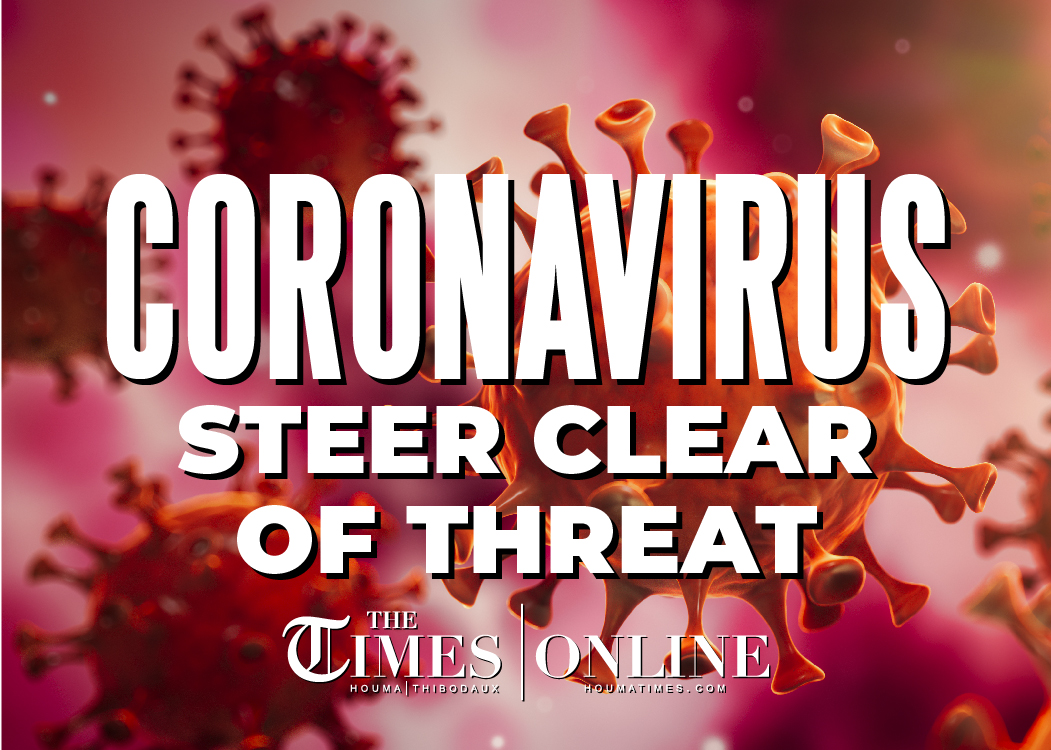
Terrebonne Booking Log: 08/04/2020
August 4, 2020
LDH reports 3,615 new cases, with 1,741 due to backlog
August 4, 2020Dr. W.S. “Chip” Riggins Jr. is the Regional Medical Director for the bayou and river areas of Region 3 Office of Public Health (OPH), which include Lafourche and Terrebonne. A retired Air Force colonel, Dr. Riggins has 30 years of state, regional and local health authority leadership as a public health and preventive medicine physician.
Dr. Riggins recently talked to the Times to answer various questions regarding COVID-19. In Part 1 of the Q&A, he discusses testing, returning to work, the recent spike in cases in Louisiana, COVID-19 versus the flu and more.
Q: Why is testing important? What does the data tell us?
A: Testing data is very important because it tells us where the virus is most prevalent right now. It shows us our hotspots, if you will, and it guides our intervention. Testing also reinforces to folks who are experiencing symptoms, the importance of isolating while you’re sick to prevent the spread of COVID-19.
So, testing is really important to us, and we don’t want to discourage testing in any way. Testing doesn’t change the extent to which the virus is in our community. But the more testing we have, the better visibility we have on the extent of the risk right now and the actions needed to protect — especially the vulnerable in our community.
Q: When should someone return to work after testing positive for COVID-19?
A: Right now, a lot of folks are interested in getting tested as part of returning to work, in lieu of a doctor’s note. The CDC has gotten even clearer in their guidance that it’s much better to use the time- and symptom-based strategy, and not the testing as a way of determining when it’s safe to return to work.
So, I really hope that businesses won’t require testing for return to work and that their employees won’t try to use testing as the means to demonstrate their ability to return to work. The guidance is very clear that if you’ve had symptoms or tested positive, you need to isolate for those 10 days. After that, it is safe to return to work, of course with masking, social distancing and good hand hygiene all continuing to be very important….We have forms on the internet now on our LDH dashboard that you can download, print out, sign and date yourself, showing that you’ve completed that isolation period.
Q: Has the time period to return to work from quarantine after being exposed to COVID-19 changed?
A: That time period remains 14 days. And that is based on the incubation period of COVID-19, which appears to be between two and 14 days. That’s the period that the virus may need to be in your system before you’re capable of spreading it to others, or before you experience symptoms yourself.
We’re getting stronger and stronger data that almost 40 percent of folks who get infected with COVID-19 and become infectious themselves do not have any symptoms whatsoever…That really is the curveball that COVID-19 throws at us and why it’s so important that folks mask, even when they’re feeling fine.
Q: This spike in cases we’ve seen in Louisiana recently: is this a second wave, or are we not done with the first wave?
A: We’re not done with the first wave, but it’s clearly a second spike. Clearly, as we moved into Phase 2, we let our guard down too much — and we’re experiencing that second spike. The second spike here in the Houma-Terrebonne area was more significant in terms of the total number of cases — but less severe in terms of the number of deaths, thankfully, than the first spike that we saw back in April and May.
…That’s due to many factors, but most of them having to do with what we’ve learned about COVID-19 and how to take care of it in the hospitals. Our nursing homes are also doing a great job in this region testing their staff and their residents and detecting the disease earlier. All that has added up to an improved mortality rate.
But our morbidity rate, which is how many cases we have in the community, really shot up here in the mid-summer. That was concerning because as we all know, that spike was predominantly driven by young people in the 18 to 29 age group. Those folks then were more likely to have asymptomatic disease or mild disease. It came at a time when I think everyone had been cooped up for so long that they wanted to get out and enjoy what was left of the summer. But we learned from that.
Hopefully, the whole community learned that this disease does take advantage when we let our guard down and that we have to really maintain of those three important measures of wearing our masks; maintaining the six-foot physical distancing between folks and respecting that space; and being very deliberate about washing of our hands and not touching our faces and preventing the spread in that way…When we let our guard down this summer, we saw what a difference those very simple things make.
Q: People have been comparing COVID-19 to influenza (flu), alluding the flu is more deadly and contagious than COVID-19. How does the flu compare to COVID-19, in relation to the R0 and mortality rate?
(The R0, pronounced “R naught,” indicates how contagious an infectious disease is, averaging how many people will contract a disease from one infectious person.)
A: We’re realizing that COVID-19 is even more easily spread than the flu. And it depends on who you are and the risk factors that you have. Clearly, COVID-19 has a much higher mortality rate and results in more serious and long-lasting consequences in those who have severe infections.
One of the things that we’re learning about COVID-19, it seems that there may be a dose relationship to how much virus you get infected with and how severe your case might be. I think everyone’s probably heard of the cases of COVID parties — where folks were infecting themselves. And of course that’s a terrible idea. In those instances, we saw a much more severe disease, much more severe symptoms from high dose infections: where folks were, intentionally or not, sharing a lot of droplets — and therefore getting a high virus inoculum.
…By wearing a mask, you drop the number of virus particles and droplets that you are emitting when you talk or cough. And in doing so, the person that would become infected gets a lower dose of virus and has a milder case of disease. So masking is important not just to hopefully prevent spread, but even if spread manages to occur in the presence of a mask — which we know is possible — we think that the disease is milder.










